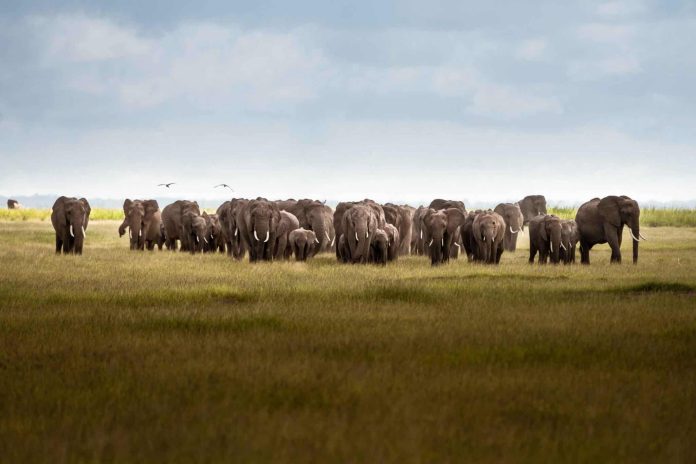The Best Places to See the Big 5. While visitors coming to Africa have their sights set on the Big 5, this continent has many more wildlife species to see. One of our recent articles combines your safari options where you can view these iconic animals in their natural habitat (as well as looking for all the other amazing animals that share the area with them).
The Big 5 were originally identified by big game hunters in the 1800s when they listed African elephant, Cape buffalo, African lion, leopard and rhinoceros as the top five most dangerous animals to hunt on foot in Africa.
Fortunately, today’s expression celebrates seeing these majestic wildlife in their natural habitat. These imposing giants are now protected both in national parks and private game reserves and today’s tourists help contribute directly to conservation of these remarkable creatures across poaching, wildlife trafficking and habitat destruction.
History of The Big 5
What are the small and shy 5’s? The backstory of the Big 5? How do you spot them? Learn more with this list of alternate 5s.
The “Different 5”
The term “Little 5” or “Small 5” was created in reference to the marketing success of Big 5 safaris in Southern Africa. This prompted a call by conservationists for visitors to look at the smaller and less-noticed animals, with an emphasis on the animals whom share part of their English name with the more well-known Big 5. In terms of size, the small 5 species are a sharp contrast to the animals that share an English name with them.
The Small 5 of Africa
Not all African wild animals are uber-hot models, but these species make up for it by being interesting.
The Ugly 5 animals are:
- Warthog
- Wildebeest
- Vulture
- Marabou stork
- Hyena
The Shy Five Animals
Not all African wild animals are uber-hot models, but these species make up for it by being interesting.
The Shy 5 animals are:
- Porcupine
- Bat-eared fox
- Aardvark
- Meerkat
- Aardwolf
Facts about The Big 5 Animals
As you know, Africa is home to some of the world’s most exciting animals. Let’s introduce you to The Big 5: African Elephant, Cape Buffalo, Lion, Black Rhino, and Leopard. These five species remain a top priority for many visitors and to see any one of these breathtaking creatures in their natural habitat on a safari remains an unforgettable thrill. We found these facts about The Big 5 interesting because of their status and significance.
Elephant
Many trees in West African forests have evolved to rely on seeds passing through elephant digestive tracts to germinate and grow. Elephants communicate across large distances at a low frequency which cannot be heard by humans.
They can get sunburned! Elephants throw sand on their backs and heads in order to prevent sunburn and keep insects off of their skins. Even though their skins are incredibly tough, they can feel the impassive insects marching over them! Elephants love swimming and are able to swim for long distances.
They use their trunks as makeshift snorkels. In addition, their trunk is used for grabbing, bathing, smelling, drinking, and can pick up something as small as a grain of rice.
Buffalo
Buffalo are formidable and unpredictable animals. They are known as one of the most dangerous animals when caught or cornered. They have killed more hunters in Africa than any other animal, mainly a result of being wounded during a hunt.
Buffalo have earned the reputation and nickname of ‘Black Death’ and ‘Widow Maker’ because they are estimated to kill over 200 people every year. A buffalo’s primary predator is the lion. When a buffalo has been chased by a lion, another buffalo will try to rescue it from its attackers. Buffalo have often been observed killing a lion after it has killed one of the group members when these happen.
Lion
As the top predator in Africa, a lion makes use of its power and size to communicate with each other very far distances. A lion sleeps up to 20 hours per day to fill up its energy reserves in an effort to save vital muscle mass.
Rhino
With high demand comes high prices. Removing rhino horns (the most endangered of the Big 5) can be incredibly lucrative. But fortunately, there are still some in the wild. Very few of them survive outside national parks and reserves now.
The horn on a rhinoceros is not attached to their skull, so if it breaks off they will grow back again quite quickly!Rhinos have poor vision and will sometimes attack trees and rocks by accident; however, their hearing and sense of smell are excellent, thus often making up for their poor eyesight.The closest living rhino “relatives” are tapirs, horses and zebras; they’re part of a group of mammals called odd-toed ungulates!
Summary on The Best Places to See the Big 5
The Big 5 is a group of animals, extensive to the African continent. These wild animals are protected in national parks and private game reserves, thanks to tourism.
Tourists contribute directly to the conservation of these animals from poaching, wildlife trafficking and habitat destruction, which is the single biggest contributor to conservation in Africa. In light of the threat posed by Covid-19, South Africa could safely open up for inbound tourism by September 2020 after all.



